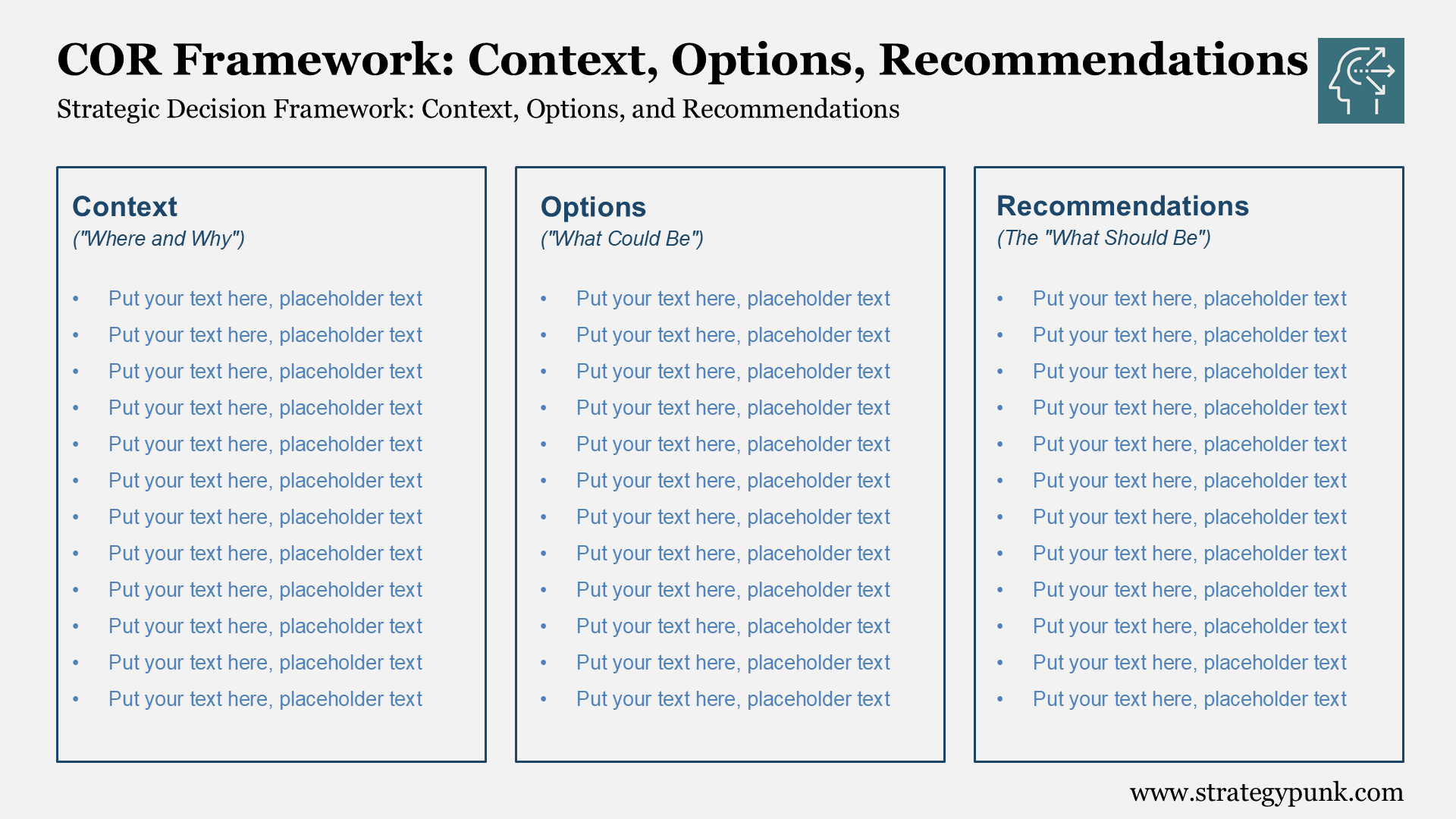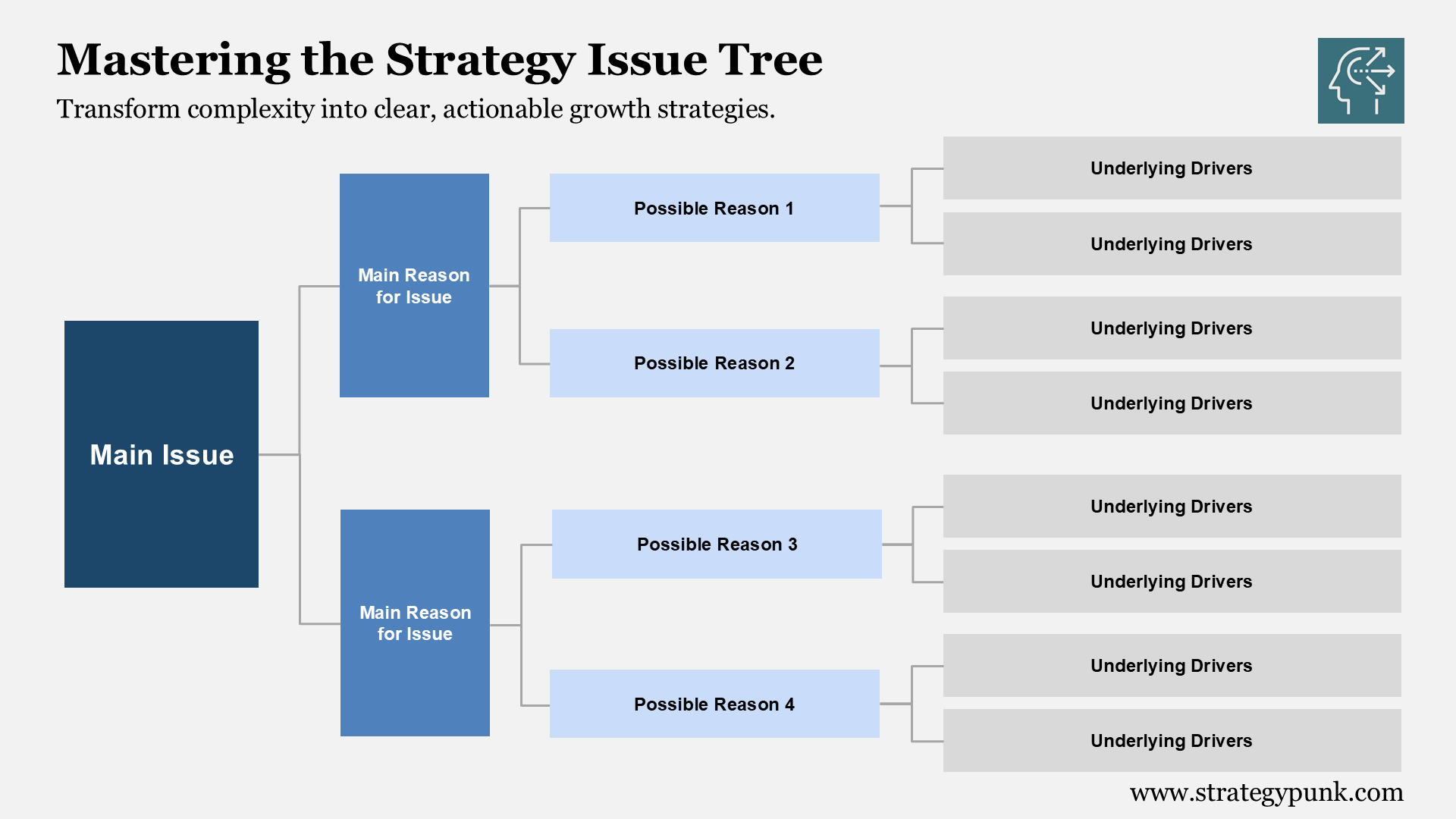Unilever's Growth Action Plan 2030: A Strategy House Analysis (Free PPT and PDF)
Unilever's McKinsey Strategy House 2030: Power brands, AI & sustainability roadmap. Free PDF & PPT download inside!

Insights derived from Capital Markets Day Presentation 2024
Companies need more vision and strategic clarity to chart a transformative path forward.
Unilever's Growth Action Plan 2030 is not just another corporate strategy document - it's a comprehensive blueprint for reinventing how a multinational consumer goods giant will compete, innovate, and create value in the coming decade.
Developed with meticulous strategic precision, this plan represents a significant pivot for Unilever.
From reimagining brand superiority to embracing cutting-edge technologies like AI and sustainable innovation, Unilever is positioning itself to adapt to change and actively shape market dynamics.
In this deep-dive analysis, we'll unpack the key components of Unilever's ambitious strategy, exploring how their renewed purpose of "Brighten Everyday Life for All" translates into concrete strategic initiatives across their global operations.
Want the Full Insights?
Download our comprehensive PDF report and accompanying PowerPoint presentation analyzing Unilever's Growth Action Plan 2030 for free. Gain exclusive strategic insights to transform your understanding of corporate innovation and market strategy.
1. Purpose and Vision (Roof)
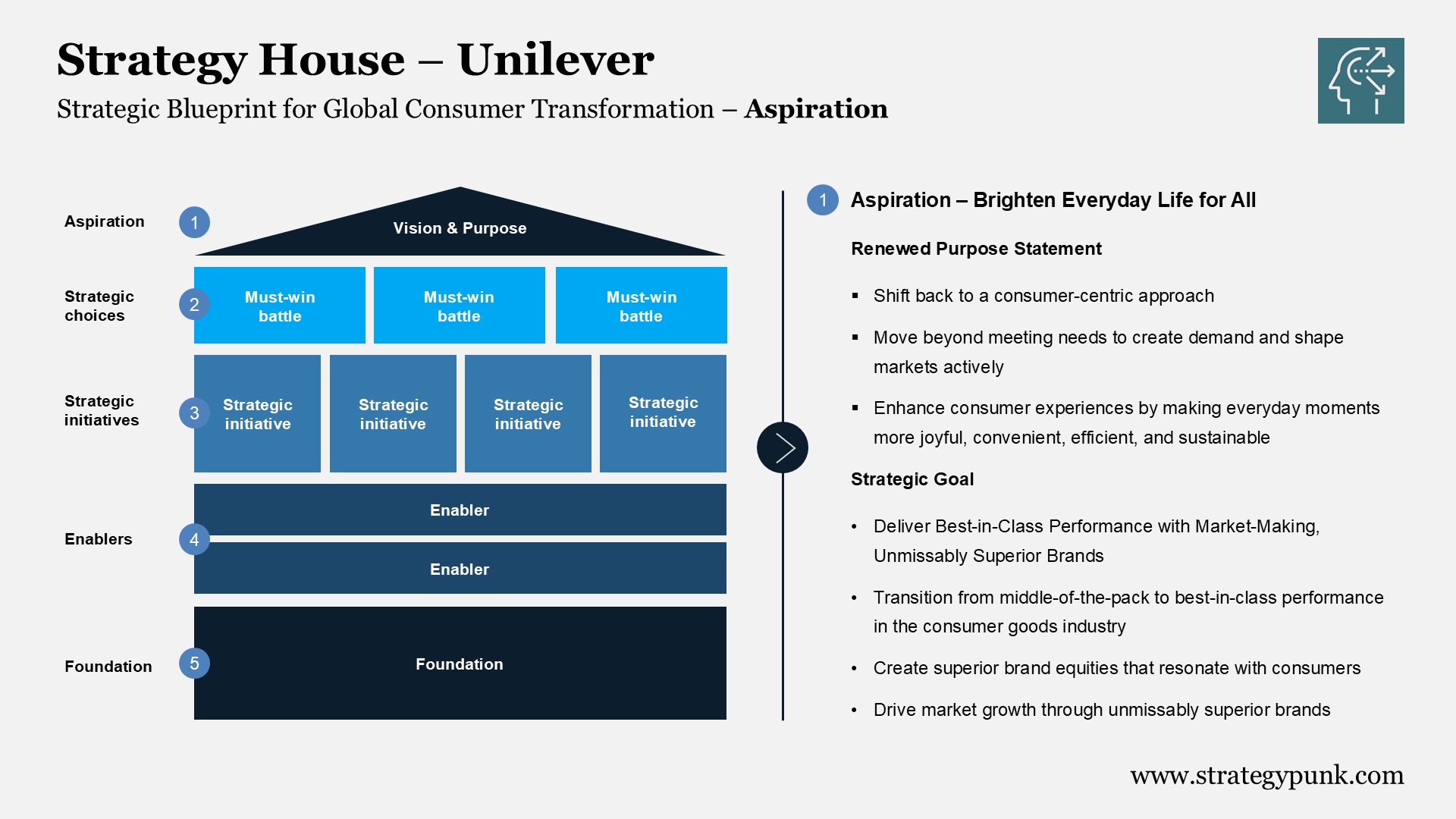
Brighten Everyday Life for All
This renewed purpose statement signifies a shift back to a consumer-centric approach. It seeks to move beyond simply meeting everyday needs to create demand and shape markets actively. By focusing on making everyday moments more joyful, convenient, efficient, and sustainable, Unilever aims to enhance consumer experiences across its portfolio of brands. A clear strategic goal supports this purpose:
Goal: Deliver Best-in-Class Performance with Market-Making, Unmissably Superior Brands
This goal clearly articulates Unilever's ambition to transition from being a middle-of-the-pack performer to achieving best-in-class performance within the consumer goods industry. This ambition will be realized by creating superior brand equities that resonate with consumers and drive market growth.
2. Strategic Choices
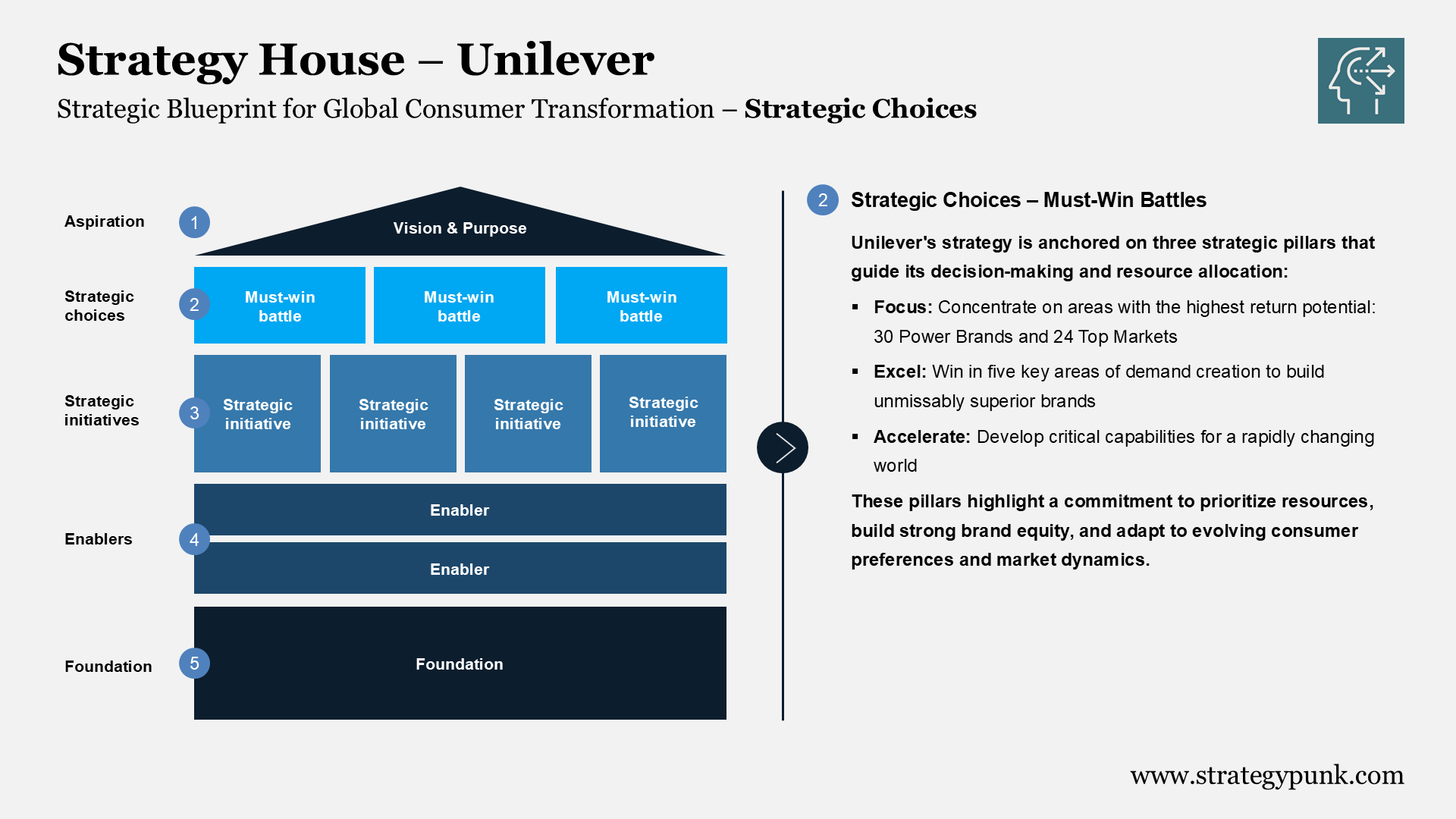
Unilever's strategy is anchored on three strategic pillars that guide its decision-making and resource allocation:
- Focus: Concentrate on areas with the highest return potential: 30 Power Brands and 24 Top Markets
- Excel: Win in five key areas of demand creation to build unmissably superior brands
- Accelerate: Develop critical capabilities for a rapidly changing world
These pillars highlight a commitment to prioritize resources, build strong brand equity, and adapt to evolving consumer preferences and market dynamics.
3. Strategic Initiatives
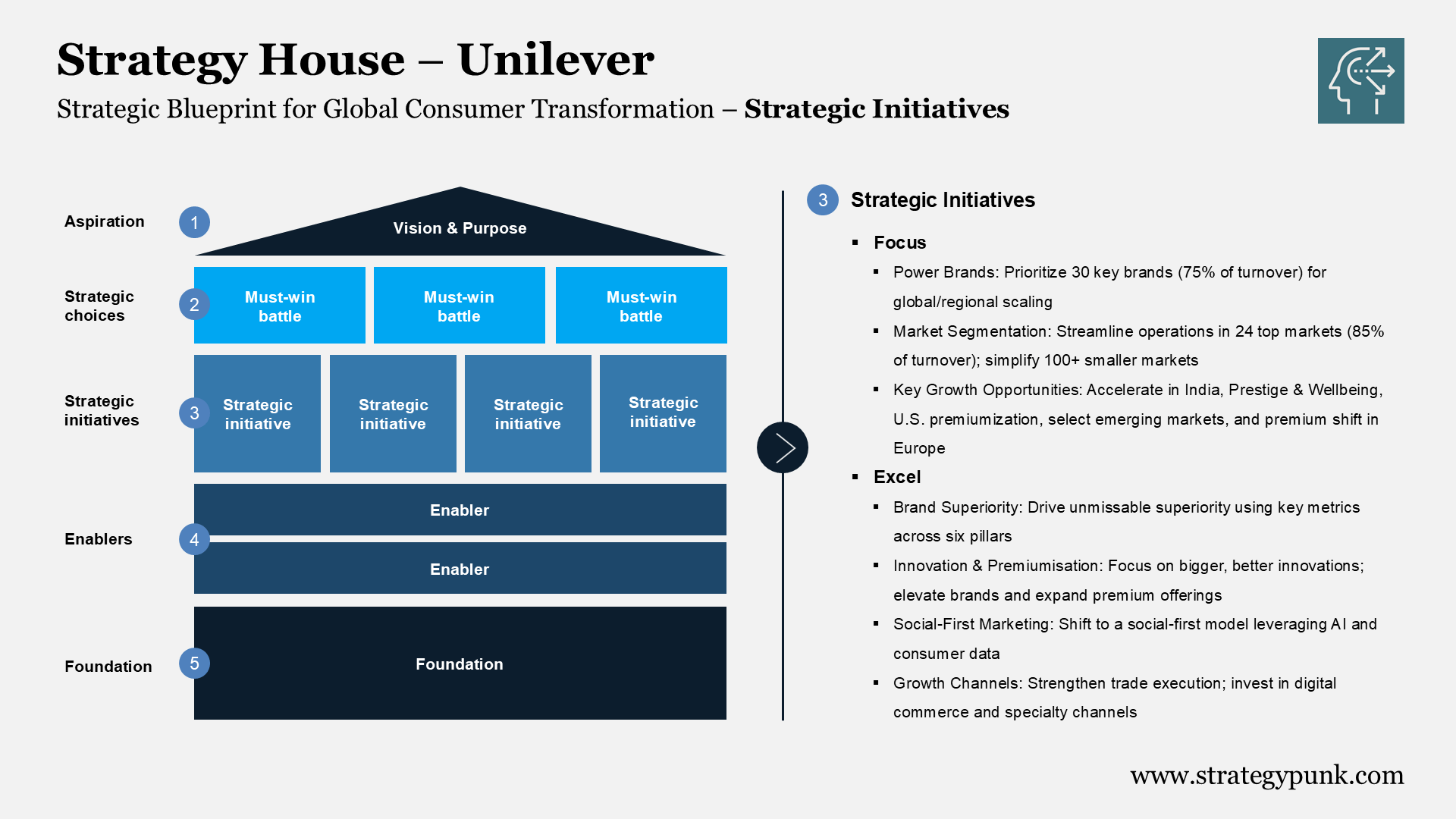
Each strategic pillar is further broken down into specific initiatives that define how Unilever will achieve its objectives:
Focus
- Power Brands: Prioritizing 30 Power Brands, representing 75% of turnover, that can be scaled globally or regionally
- Market Segmentation: Implementing a new operating model with 24 Top Markets (85% of turnover) managed by Business Groups with end-to-end P&L responsibility and 100+ smaller One Unilever Markets managed for scale and simplicity
- Key Opportunity Prioritization: Doubling down in India, accelerating the Prestige and Wellbeing businesses, premium rising in the United States, growing select emerging markets, and shifting the European portfolio towards premium and specialty channels
Excel
- Unmissable Brand Superiority: Utilizing a holistic approach with 21 input metrics across six pillars (Proposition, Packaging, Product, Promotion, Place, Pricing) to drive brand superiority
- Multi-Year Scalable Innovations: Focusing on fewer, bigger, and better innovations with multi-year support, driven by superior science and technology. Shifting from renovation to innovation to drive portfolio transformation
- Premiumisation: Elevating core brands, expanding the Prestige and well-being businesses internationally, and rotating the portfolio towards premium products through acquisitions and divestments. Employing three key thrusts: improve the core, accelerate and internationalize Prestige & Wellbeing, and strategically reshape the portfolio
- Social First Demand Generation: Shifting to a social-first marketing model by embedding brands in culture and using AI to drive content creation and leverage consumer data
- Growth Channels: Strengthening execution in modern and traditional trade while investing in fast-growing digital commerce and specialty channels. Improving integration with key retailers' data for better planning and forecasting in modern trade, digitizing traditional trade in key regions, and building dedicated sales efforts for Beauty and Wellbeing in the health and beauty channel

Accelerate:
- Science & Technology: Investing in research and development focused on microbiome, biotechnology, and next-generation materials, as well as building future-fit R&D capabilities through digital R&D, fragrance creation, premium packaging, and strategic partnerships
- Lean Agile Supply Chain: Utilizing automation and interconnected systems to enhance efficiency, optimize routes and loads, improve labor planning, and reduce logistics costs. Transforming networks and collaborating with tech partners to drive a more agile, responsive supply chain
- Scaled AI: Implementing AI solutions across the business for demand creation, connecting with customers, accelerating innovation, achieving autonomous operations in factories ("dark factories"), enhancing procurement processes, and optimizing fulfillment
- Net Productivity: Shifting focus from gross to net savings and driving material savings through competitive buying, value chain interventions, and SKU and specification reduction. Targeting to beat market inflation in material costs by 1% and reduce costs per unit in manufacturing and logistics by 2% per annum
- Sustainability: Focusing on areas of highest environmental and social impact, including climate, nature, plastics, and livelihoods. Collaborating with legislators and retailers for policy change and maximizing impact
These specific initiatives demonstrate how Unilever is translating its broad strategic pillars into tangible actions that drive progress across the business.
4. Enablers

To effectively execute its strategic initiatives, Unilever recognizes the importance of critical enablers:
- Winning Culture: Fostering a high-performance culture built on clear values (pioneering, respect, integrity, responsibility), desired behaviors (care deeply, focus on what counts, stay three steps ahead, deliver with excellence), and a focus on talent development, inclusivity, and employee engagement
- Simplified Organisation: Creating a leaner, more accountable organization through geographical simplification, organizational simplification, and technology transformation. Reducing management layers, increasing spans of control, and moving transactional activities to offshore hubs
- Productivity Programme: Implementing a comprehensive program to achieve €800 million in cost savings over three years, mainly through procurement and value chain interventions, to offset dis-synergies from the Ice Cream separation and fuel growth investments
- Capital Allocation: Prioritizing capital allocation towards growth and productivity investments, including brand building, R&D, capacity expansion, and technology upgrades. Optimizing the portfolio through strategic acquisitions and divestments while also returning capital to shareholders through dividends and share buybacks
- Ice Cream Separation: Creating a standalone Ice Cream business to unlock its full potential under a tailored strategy and financial model. Pursuing a demerger is the most likely route to ensure maximum shareholder value and execution certainty
These enablers highlight Unilever's commitment to building the proper organizational structure, capabilities, and processes to support the execution of its Growth Action Plan 2030.
5. Foundation

The foundation of Unilever's Strategy House comprises the fundamental elements that underpin its operations and long-term resilience:
- Strong Financial Position: Maintaining a healthy balance sheet with a strong credit rating and a commitment to delivering consistent cash flow generation and attractive returns on invested capital
- Global Scale and Reach: Leveraging its extensive global footprint and presence in both developed and emerging markets to drive growth and capitalize on regional opportunities
- Deep Consumer Understanding: Investing in consumer insights and analytics to understand evolving needs, preferences, and behaviors. Utilizing data and AI to drive more effective marketing and innovation
- Commitment to Sustainability: Maintaining a focus on sustainability across its operations and value chain, collaborating with stakeholders to drive positive change, and setting ambitious environmental and social targets
This solid foundation provides Unilever with the stability and resources necessary to execute its strategy and navigate the complexities of the global marketplace.
Conclusion
Unilever's Growth Action Plan 2030, as analyzed through the McKinsey Strategy House framework, showcases a company striving to achieve best-in-class performance.
By focusing on its strongest brands and markets, excelling in key areas of demand creation, and accelerating critical capabilities, Unilever is laying the groundwork for sustainable, profitable growth.
The company's commitment to building a winning culture, driving productivity, and maintaining a strong financial foundation provides further confidence in its ability to deliver on its ambitious goals.
Disclaimer: This analysis is based on Unilever Capital Markets Day 2024 and may not encompass every nuance of the company's complex strategy.



